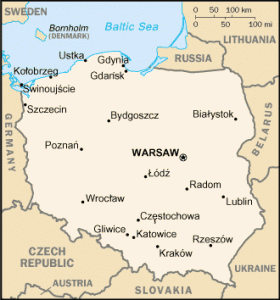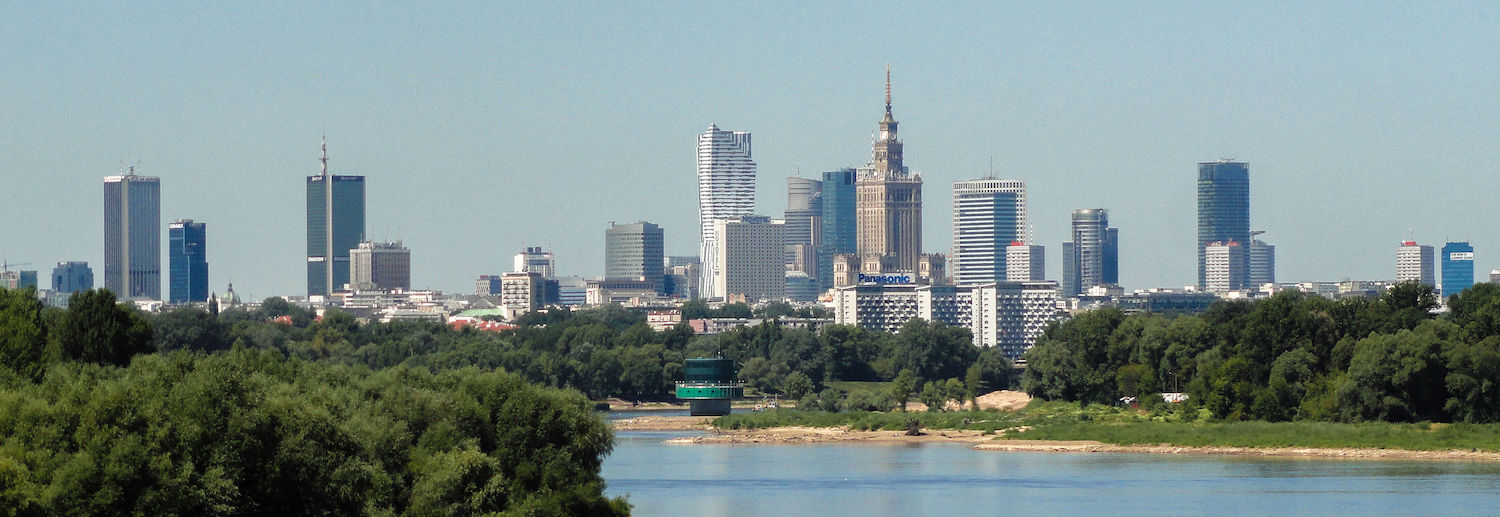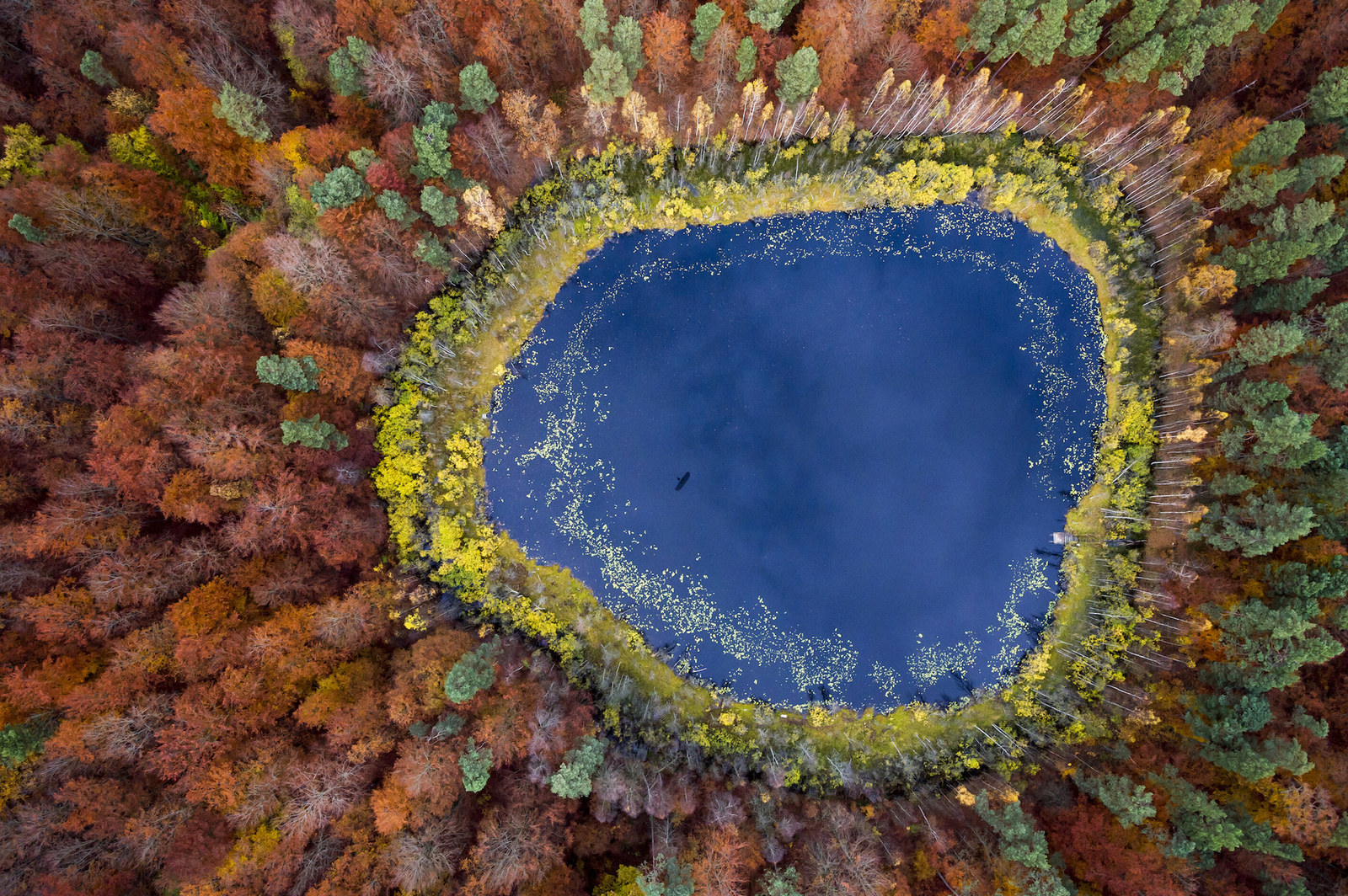Poland March 11, 2020 Baltic , Baltic Sea , Carpathian Mountains , Central Europe , COP24 , Europe , European Union , Gdansk , Hanse , Hanseatic League , Katowice , Krakow , Lodz , NATO , OECD , Poland , Pomerania , Poznan , Prusse , religion , Silésie , Visegrád , Visegrád Group , Vistule , Warsaw , Wroclaw Official name Republic of Poland Name in local language Rzeczpospolita Polska (pl) Continent Europe Subcontinent European Union Population (ranking: 38e ) 38,386,158 inhabitants (2019) Population growth -0.07 % / year Area 312,679 km² Density 122.77 inhabitants / km² GDP (ranking: 23e )585.783 billions $USD (2018) GDP/capita (ranking ) 15,424 $USD (2018) GDP growth 5.10 % / year (2018) Life expectancy (ranking ) 78.50 years (2018) Birth rate 8.90 ‰ (2019) Fertility rate 1.45 children / woman (2017) Death rate (ranking ) 9.70 ‰ (2019) Infant mortality rate (ranking ) 4.40 ‰ (2019) Literacy rate 99.80 % (2019) Official languages Polish Currency Polish złoty (zł PLN) HDI (ranking: 50e )0.872 / 1 (2018) EPI (ranking )64.11 (2018) Government Unitary semi-presidential republic Head of State President Andrzej Duda National Day 3rd May (constitution of 1791) ISO Codes PL, POL Demonym Polish Tourists (ranking ) 18,257,800 people (2017)
Entry into the European Union has been beneficial Poland is a central European state bordering Germany to the west, Czechia and Slovakia to the south, Ukraine and Belarus to the east, the Russian enclave to Kaliningrad and Lithuania to the north . It is bordered to the north by the Baltic Sea .
Warsaw, Poland. Photo: Filip Bramorski Poland – Lake in autumn, Pomerania. Photo: Wildlife Archives Urban areas (2016) Urban areas Population Warsaw 3,386,904 inhabitants Katowice 2,733,616 inhabitants Kraków 1,489,401 inhabitants Łódź 1,428,579 inhabitants Gdańsk (Tricity - Trójmiasto) 1,325,605 inhabitants Wrocław 1,226,667 inhabitants Poznań 1,185,567 inhabitants Szczecin 917,198 inhabitants Bydgoszcz-Toruń 775,927 inhabitants Kielce 766,911 inhabitants Lublin 711,976 inhabitants Bielsko-Biała 666,146 inhabitants Rzeszów 635,960 inhabitants Rybnik 635,512 inhabitants Opole 617,990 inhabitants Radom 614,155 inhabitants Częstochowa 517,353 inhabitants Białystok 512,004 inhabitants Tarnów 463,170 inhabitants
Administrative divisions Provinces (Voivodeships) Population Area Greater Poland (Wielkopolskie) 3,484,975 inhabitants 29,826 km² Holy Cross (Świętokrzyskie) 1,249,710 inhabitants 11,711 km² Kuyavian-Pomeranian (Kujawsko-Pomorskie) 2,082,935 inhabitants 17,972 km² Lesser Poland (Małopolskie) 3,386,162 inhabitants 15,183 km² Lower Silesian (Dolnośląskie) 2,902,365 inhabitants 19,948 km² Lublin (Lubelskie) 2,129,260 inhabitants 25,122 km² Lubusz (Lubuskie) 1,016,652 inhabitants 13,988 km² Masovian (Mazowieckie) 5,372,579 inhabitants 35,558 km² Opole (Opolskie) 991,161 inhabitants 9,412 km² Podlaskie 1,185,174 inhabitants 20,187 km² Pomeranian (Pomorskie) 2,319,735 inhabitants 18,310 km² Silesian (Śląskie) 4,552,627 inhabitants 12,333 km² Subcarpathian (Podkarpackie) 2,127,687 inhabitants 17,846 km² Warmian-Masurian (Warmińsko-Mazurskie) 1,434,783 inhabitants 24,173 km² West Pomeranian (Zachodniopomorskie) 1,706,579 inhabitants 22,892 km² Łódź (Łódzkie) 2,479,962 inhabitants 18,219 km²
See also 



